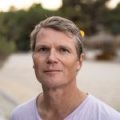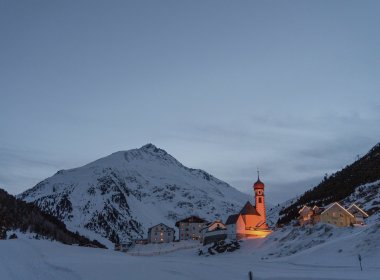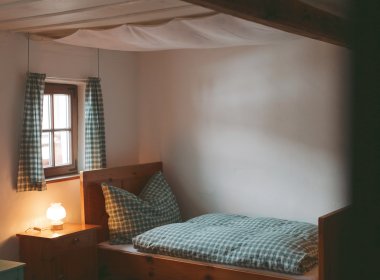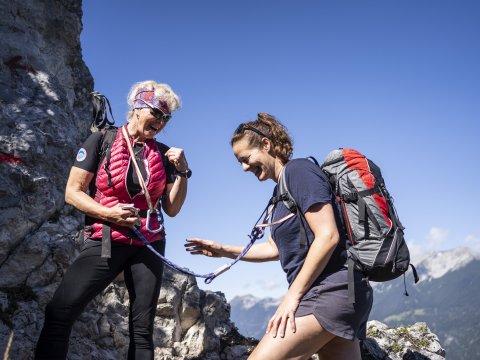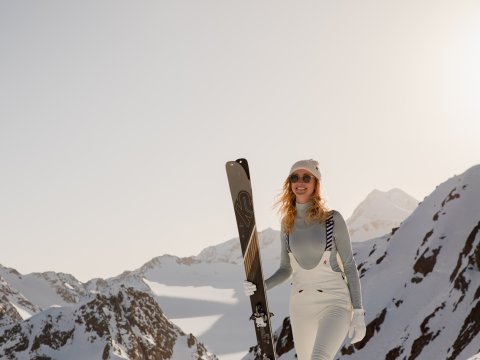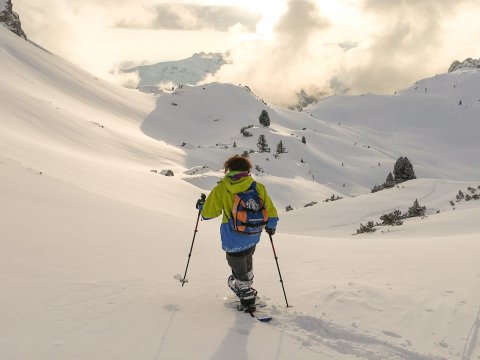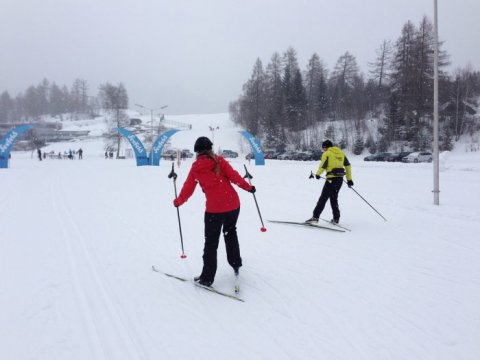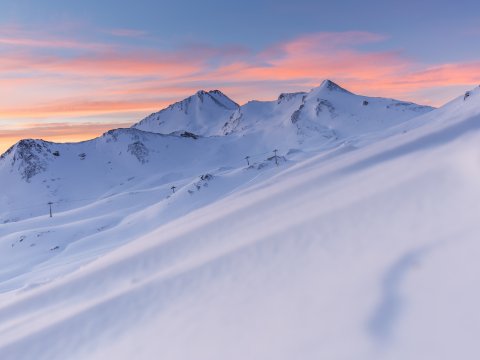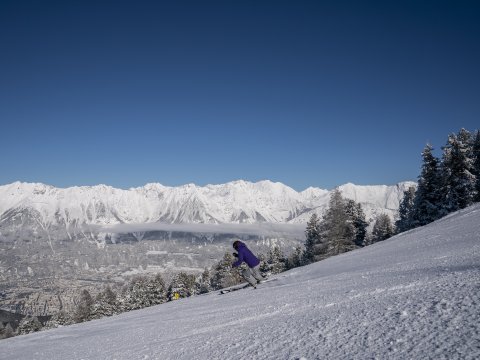Walking and talking
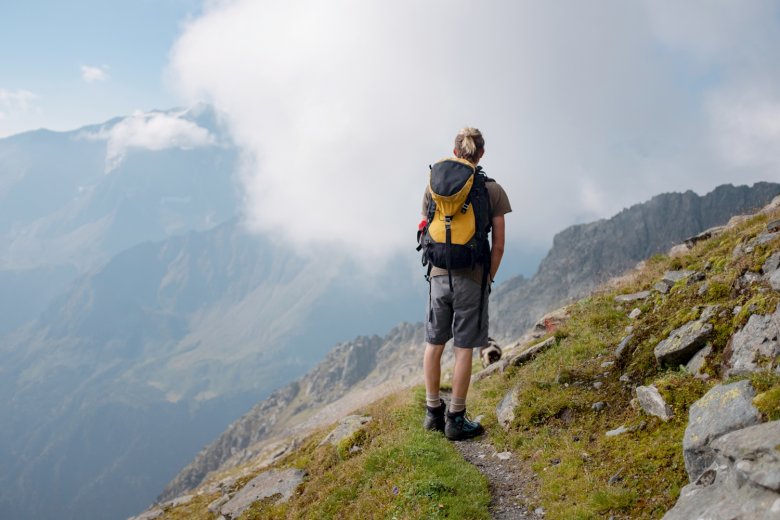
When I suggested to my son the idea of hiking from hut to hut for a few days in Tirol, there was no immediate rejection. I grabbed the bull by the horns and put the date in my diary. Maybe he has a bad conscience because he screwed up at school last year? Or maybe he just likes the idea of a few days in the mountains with his old man? After all, he has always been a fan of the Alps – and there is a special occasion to celebrate. Thibault, my son, is turning 18. Understandably, however, he doesn’t fancy spending his 18th birthday with his father in a mountain hut. I can understand that. After all, I was once young myself – many moons ago. He decides to head first to Berlin for five days of partying, then come back home for a day of sleeping followed by the tiresome task of packing a rucksack. Yes, I’ve got a rain jacket. Woolly hat? Gloves? Dad, do we really need them – we’re not embarking on an expedition to the North Pole. Rucksacks packed, we find ourselves sitting in the cable car at Schlick 2000 in the Stubai Valley. We are both relaxed but a little tired from the car journey, so we decide to take the easy option and ride the gondola from the village of Fulpmes up onto Kreuzjoch mountain. The forest whizzes by like in a film.
“My ears are about to pop.”
“They survived the nightclubs of Berlin, so it can’t be that bad.”
“That was different – here it’s the pressure, in Berlin it was just boom, boom, boom.”
2,108 metres above sea level
We wouldn’t have had time to walk up from the valley anyway. On day one we want to complete two stages – a challenge is always good, I thought to myself. We will be staying above the treeline for five days, following the Stubai High Trail. Five days. We haven’t spent that long together, just the two of us, for what seems like forever. But hiking together has become a bit of a family ritual. Since Thibault was four years old we have always gone walking together. In recent years it has become less and less frequent, but it’s still something important to both of us. Now is a chance make up for lost time.


It is our first time in the Stubai Alps. We both like craggy, moon-like landscapes. They have something very Nordic about them. We pass beneath the summit of the Schlicker Seespitze with its expanses of loose gravel and rock. No tree, no bush in sight. Our rucksacks feel surprisingly heavy. It’s hard work. Dad, you’re sweating like a beast! But at least I’m not the only one – his back is wet with sweat too. Over the five days we will only summit three mountains. Others collect 3,000m trophies here in the Stubai Alps like rotten apples in autumn. Our priority, however, is quality not quantity. We don’t have to boast to anyone back home about how many peaks we conquered. We are happy to walk over ridges and passes along a route which switches from one side mountains to the other on regular occasions. It is early in the first afternoon that we meet our first herd of sheep, clinging with seeming ease to a steep mountain slope near the Seeducker Hochalm hut. They are small, strong sheep used to this kind of terrain. Their faces are incredibly long, a little like comic figures. Some are very trusting and come close enough for Thibault to stroke them. “It makes a nice change,” I say,” to have a bit of bleating instead of mooing.”
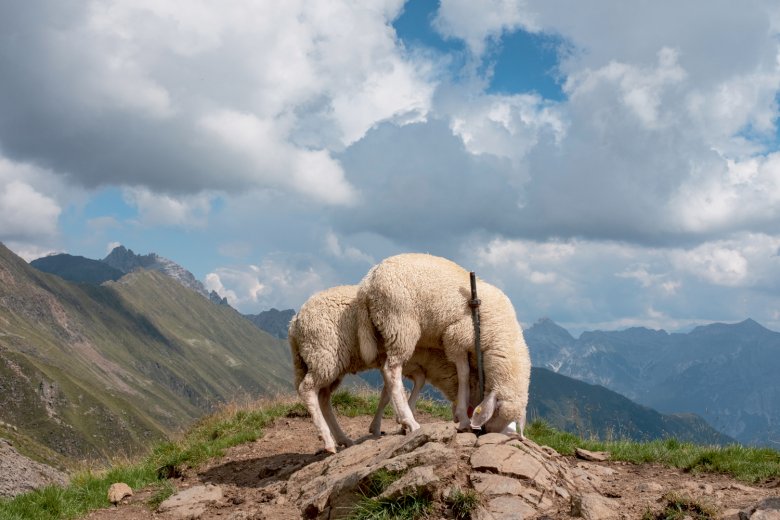
2,147 metres above sea level
On day one we complete 20 kilometres. When we finally reach the Franz- Senn-Hütte hut and take off our rucksacks, we can feel our shoulders aching. Ouch. Maybe they aren’t set up right? Maybe we have got too much stuff with us? Or maybe we just have to get used to it? The friendly owner of the hut has reserved a double room for us. Heaven. There is even a hot shower. Thibault, of course, has forgotten his towel. It doesn’t seem to bother him – he’s got plenty of T-shirts he can use instead, he says cheerfully. On day three he finds his towel after all – right at the bottom of his rucksack. After an amazing hot shower we settle down to a hearty meal comprising three different types of dumplings – cheese, spinach and bacon. Bliss.
Walking together gets us talking together. For hours and hours.
Day two appears an easy one – at least on paper. Just 10 kilometres from start to finish. I guess this relatively relaxed schedule has messed with our minds, because we start the day by heading in the wrong direction. “Höllenrachen“ says the sign: Jaws of Hell. Sounds good. Despite its fear-inducing name, it turns out to be a wide valley floor with a rushing stream transporting milky-blue glacier meltwater off the mountain. The ground underneath our feet is soft and springy. After half an hour we realise that so far we have been in purgatory. Only now are we are truly arriving at the “Jaws of Hell”. It lives up to its name! The water thrashes and splashes between two steep rock faces. If you fall in there it’s over and out. We both had no idea that water could be so intimidating. Walking together get us talking together. For hours and hours. Can it be that it is easier to chat while walking? Does the up-and-down sensation somehow loosen the tongue? One thing is for sure: up here there are no distractions. No work, no phone calls, no visits. Just the two of us. Thibault and me. And, of course, the marmots with their incessant high-pitched whistling. So what have we spent the many hours talking about? German rap, trust, shopping with friends, veganism, foreign words in the German language, techno, feminism, waterfalls, the rapper Käpt’n Peng, previous hikes and holidays, Wes Anderson and his films, cheese, Pauline, the will to win in sport, bodyweight training, cyberpunk, friendship.
We slowly zig-zag our way up through a stretch of terrain covered in rocks and boulders. “It’s like Charlie Chaplin,” I say. “You mean The Gold Rush,” adds Thibault, reading my mind. Bingo. That takes us onto the topic of silent movies. Chaplin, Laurel and Hardy. Buster Keaton, we agree, was the big daddy of them all. Thibault remembers a silent film set in the mountains that we once watched together: “The White Hell of Pitz Palu“. We also agree that we both don’t like the current trend of hanging Tibetan prayer flags at huts. What’s that all about, we puzzle. Global mountaineering? Buddhism? Ethnic decoration? Though, to be fair, here in the craggy Stubai Alps it sometimes does look a bit like Tibet with these wide open valleys above the treeline. “Tibet? For me it’s more like Wales or Iceland, says Thibault. “The only difference is that the waterfalls are smaller here and there aren’t any hot springs.”
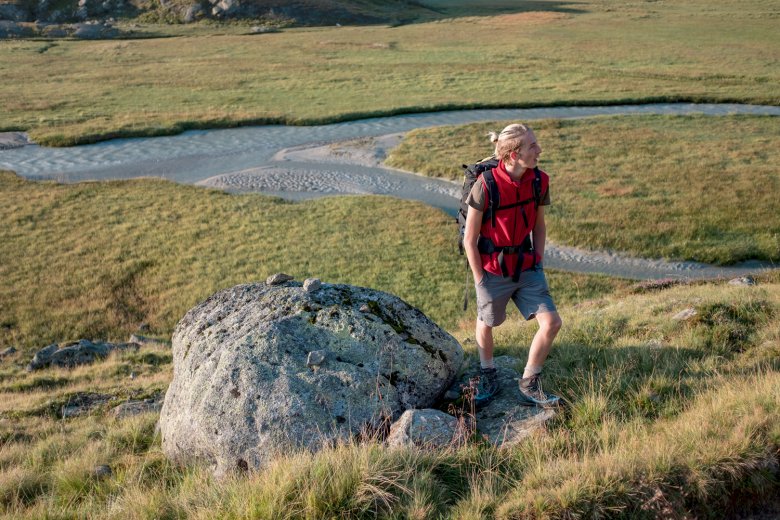
The good thing about multi-day hikes like these is that there is a plan for each day. No discussions, no last-minute changes. In the evening you sit down, take a look at the map together and see where you are going tomorrow. It’s probably this strict structure that keeps your mind free for other things like chatting. Our route is becoming increasingly rocky. In some sections we have to hop from one large stone to another. As a child my son loved doing that. He is sure-footed – but doesn’t always have the best head for heights. There are some spots where he doesn’t feel 100% comfortable. In those cases we take things slowly. From day to day it is getting better.
2,286 metres above sea level
There are renovations going on at the Neue Regensburger Hütte hut. Workers stride back and forth. Huge plastic tarpaulins are spread out. Despite the disturbance, there is still a warm welcome – and, thankfully, a delicious slice of cheesecake with blackcurrants awaiting us. “If you want to wash, you should go to the bath,” says the owner. By “bath” she means a small lake next to the hut. We take her advice and stride down barefoot to the still body of water. She had promised us that the water temperature is currently around 20°C. Surely that can’t be right. I wade into the water and it takes my breath away. She definitely isn’t right. But a refreshing dip in a mountain lake just as it begins to drizzle is perfect for soothing our tired muscles. As we settle down for dinner, the vegetarian dish on the table next to us looks even better than our tasty chicken. We get chatting to the two people who are enjoying the veggie variation. It turns out they are a father-son duo from Antwerp in Belgium. The father, a thin but strong man, is spending time with his son, who is the same age as Thibault. Before the soup comes they play a game where one person has to draw something and the other person has to guess what it is as fast as they can. Stairs? Book? Bible? Novel? Nearly. Encyclopedia? Bingo!
We step outside for an after-dinner walk and end up running into a herd of sheep. Night is already beginning to fall. The clouds hang low. Perfectly suited to this terrain, the main job of these animals is to maintain the natural landscape, explains the friendly shepherd who has just made his way up to the high pasture to check on them. Here in this valley alone there are several hundred of them, he adds. They are Tirolean mountain sheep and stone sheep. In the dormitory at the hut we are packed in like sardines. Not exactly perfect conditions for a good night’s sleep. At least the people lying next to us are friendly. They are a couple of pensioners from Lower Bavaria who are hiking with a friend. We end up bumping into them several times over the next few days. Like us, they are completing two stages of the Stubai High Trail each day.
Day three. We are up early and out of the door by 7:00am. The climb up to the Grawagrubennieder mountain is considered one of the main challenges on the Stubai High Trail. We don’t find it all that tough, but from the top we can see the glaciers at the end of the valley for the first time. “Wow,“ I say. “Sick,” says Thibault. Thick fog is swirling up towards the summit where we are standing. Our destination is still 12 kilometres away, on the other side of the valley.
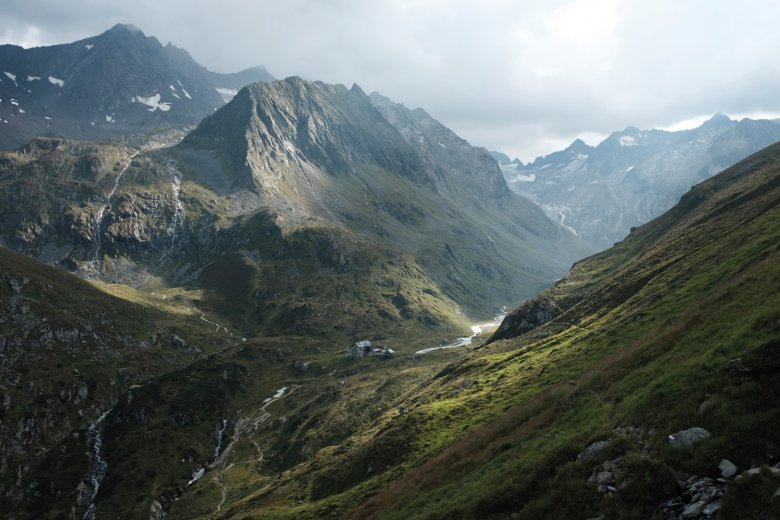
2,308 metres above sea level
A few hours later we hike through a ski resort and suddenly find ourselves surrounded by hundreds of people. Cable cars zip past like something from a science fiction film. Deckchairs and expanses of concrete. After so many days in the wilderness, we are not used to this – and we both agree that we don’t like it. Time to move on. We head over the next mountain and down to the Sulzenauferner glacier with its eye-catching lake. Seen from above it seemed like the perfect place to cool off with a quick plunge. As we get closer we can see small blocks of ice floating on the surface. A fresh breeze wafts towards us from the glacier. “Still fancy a dip?” asks Thibault with a smile. I slip off my shoes and socks and wade into the icy water, but I can’t take it for long. As if to prove my point, I pick up a block of ice and hand it to Thibault. He has just enough time to comment on how it looks like a spaceship before it crumbles through his fingers into a thousand crystals.
Again and again during our hike it looks like we are going to get wet as storm clouds gather on the horizon in bizarre shapes: towers, fists, aliens. But every time we are lucky and we avoid the rain, either because it moves away from where we are or because the heavens don’t open until we get to our accommodation. Just as we arrive at the Sulzenauhütte put our rucksacks down in our room, we hear a clap of thunder and the pitter-patter of raindrops on the roof. High five! At dinner, Thibault is pretty much the only one under 60 years of age. He’s feeling the strain as our adventure reaches its half-way point. Not even a beer can help brighten his mood.
Next morning I turn on the light.
“Come on Dad,” he complains from the top bunk. “That’s right in my bloody eyes.”
“Good morning.”
“What’s the time?”
“Ten to seven – an hour later than we got up yesterday.”
“Weather?“
“Could be better.”
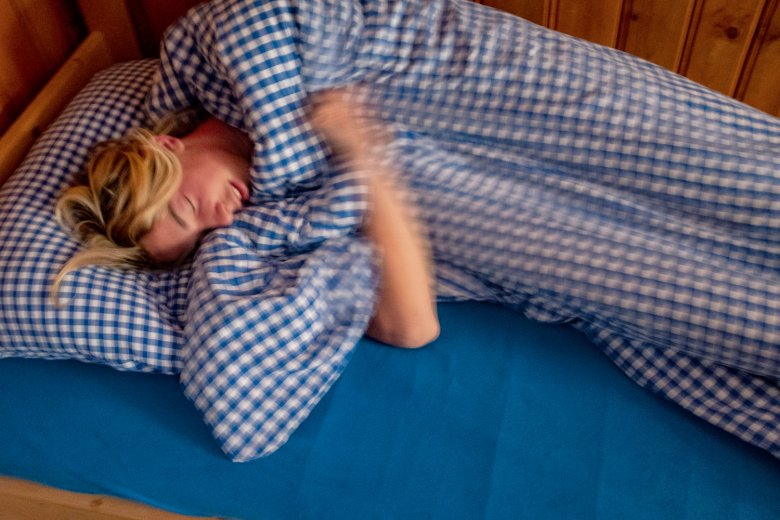
Thankfully the clouds hanging over the Wilder Freiger mountain clear and Thibault’s mood improves after just a few minutes of walking. “I’m also a city boy,” he says as we stop off for a drink. The water of the Grünausee lake reflects the mountains around us like in a high-resolution photo. Then we talk about fashion, portable speakers and the fact that the owner of the last hut we stayed at gave us an invoice belonging to the pair of pretty girls from Holland from room nine. They had forgotten to pay when they checked out. By mistake, of course. We catch up with them over lunch at the Nürnberger Hütte hut. They are more than a little embarrassed by their mistake.
Walking together, side by side, in silence is part of the experience.
Sometimes we drift a few metres apart. We say nothing or just concentrate on the path ahead of us. Walking together, side by side, in silence is part of the experience. Being in each other’s company without having to say anything is a sign that we trust each other. It is a tacit agreement. A hike in the mountains would be worth it for this feeling alone. Again and again we see sheep. Thibault and I, we like sheep: their smell, their bleating, their bells and their faces full of character. Thibault strokes one, running his hands through its fine wool. Only the lambs are shy and jump away as we approach. Which episodes of Shaun the Sheep can we remember together? And what were the other characters called? Blitzer, Shirley, Timmy… Then it’s time to climb again. We head up over rocks that have been polished flat over many millions of years by glacier ice that has today melted away. Then we cross a wooden bridge into paradise. Here, in this area of wetland, we find countless flowers in bloom and a rushing stream winding its way down from the glacier to the valley floor.
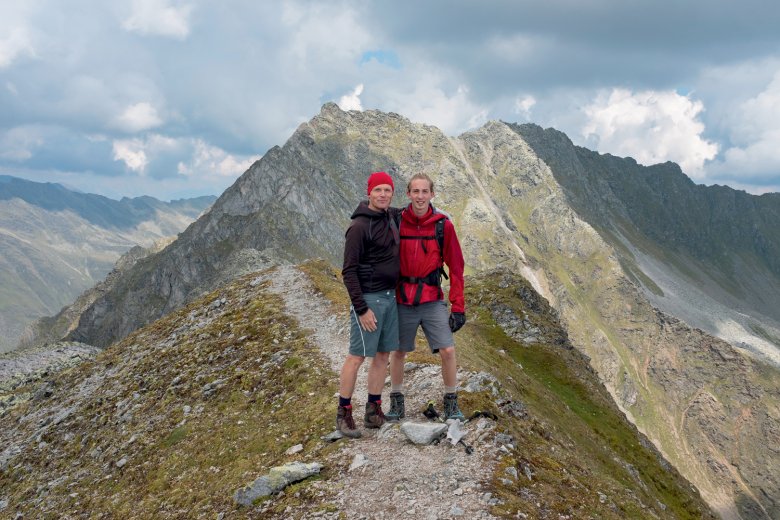
2,754 metres above sea level
By the time we reach the Zollhütte hut we are cooked. It is the most tired both of us have felt during the entire hike. Maybe we haven’t drunk enough? Or maybe the sun was hotter than we expected? We sit down, take a few deep breaths, have a drink and snap a couple of selfies. The Bremer Hütte, our last stop, is a surprise. Not because it is full, but because the other people staying the night are so young. Everywhere we look there are youngsters drinking coffee, lemonade and beer on the rocks around the hut. Things get pretty lively in the evening – definitely more lively than with the 60 year-olds at the other hut. We get chatting to Helmut and his daughter Liska, who are also spending a bit of quality time together. Both have interesting backgrounds: she studies in Berlin, he used to work in a prison. “This is the best hut,” says my son as we stand next to each other brushing our teeth. “It has the best food, the best people. It’s a really cool place.“ One more sleep until it’s time to head home. “It’s a shame we have to go back,” says Thibault the next morning. “Today’s our last day and my body is full of energy.”
The walk down into the valley is over almost too soon. As we descend we pass back down into the realm of forests, fences and cows. We see tractors and people riding e-bikes. We manage to hitch a lift for the last few kilometres back to the car. Rucksack off, music on. It’s time for us to head back to Munich. The journey will take around two and a half hours. Time to turn the volume up. “You do the music,” I say. Thibault chooses Isolation Berlin. I like it. We’ve done enough talking for the moment.
Tips for hut hikes
The slightly shorter version of the Stubai High Trail leads from Fulpmes to Gschnitz and comprises 68 kilometres of hiking – with 4,530 vertical metres of elevation gain.
The hike can be extended to include many more mountains in the area. Among the most popular ones are the Östliche Knotenspitze (3,101m), the Wilder Freiger (3,418m) and the Habicht (3,277m).
The Stubai High Trail normally ends at the Bremer Hütte hut. From there, hikers walk down to the Innsbrucker Hütte (10.4 kilometres) and then all the way down into the valley at Neder bei Neustift (11 kilometres). A quicker option is walking down to Gschnitz in the neighbouring Gschnitztal Valley.
The huts tend to be very busy in summer. It is a good idea to hike during the week if possible since the weekends are traditionally the busiest times.
Details on the Stubai High Trail can be found in the Rother hiking guide entitled “Trekking im Stubai“ (German). However, please be aware that the walking times indicated in the guide are not universally accepted among experienced long-distance hikers.











